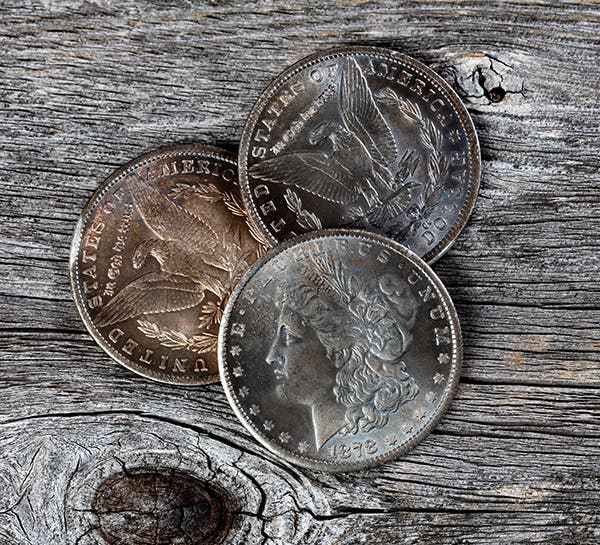Gold coin denominations strange
Please settle an argument. Is the “eagle” a real denomination for U.S. coins? The Act of April 2, 1792, established standards for the gold eagle, half eagle and quarter eagle…
Please settle an argument. Is the “eagle” a real denomination for U.S. coins?
The Act of April 2, 1792, established standards for the gold eagle, half eagle and quarter eagle denominations. The Act of March 3, 1849, authorized the double eagle. The gold $1, $3 and $50 coins were never named other than their denomination. The silver and gold bullion coins struck from 1986 on legally are American Eagles.
Is it true that the Mint referred to proof coins as medals?
There are several instances of this, including the subterfuge of selling the Trade dollar proofs as medals to get around the Treasury Department order that halted production of the Trade dollar in 1878.
Wasn’t there a ban on owning the Canadian 1967 $20 gold coins, and when was it lifted?
The Canadian gold coin was one of those listed as a modern coin and thus not eligible for importation into the U.S. The ban was lifted at midnight on Dec. 30, 1974. Previous to that, there were severe restrictions on ownership of most modern gold, but many were smuggled in anyway.
In 1857 when the government ended the circulation of foreign coins in the U.S., the Spanish dollars were redeemed, but did they pay full value for them?
Coins from a variety of countries, but mostly Spanish reales including the 8 reales or Spanish dollars, were redeemed at post offices, land offices and at the U.S. Treasury, but only for about 80 cents to the dollar. This was due in part to the fact that many of the coins had been worn smooth from years of hard usage.
Wasn’t the Board of Lady Managers, which responsible for the Isabella commemorative quarter struck for the 1892 Columbian Exposition, unique in other ways?
The claim was made in an article written by the head of the board, Mrs. Potter Palmer, in the June 1892 Ladies Home Journal, that this was the first time in history that a body of women had been legally appointed to act in a national capacity for a government anywhere in the world.
What authority did President Franklin D. Roosevelt have to close the banks, prohibit the sale or export of gold and stop the minting of U.S. gold coins in 1933?
None, very little or lots, depending on who you talked to at the time. Authorities on Constitutional Law claimed that there was little if any legal precedent for his actions and that they were probably unconstitutional.
Was the 1976-dated $2 note considered to be a commemorative issue?
In a word, no. It was a normal note issue.
E-mail inquiries only. Do not send letters in the mail. Send to Giedroyc@Bright.net. Because of space limitations, we are unable to publish all questions.
This article was originally printed in Numismatic News Express. >> Subscribe today
More Collecting Resources
• Is that coin in your hand the real deal or a clever fake? Discover the difference with U.S. Coins Close Up, a one-of-a-kind visual guide to every U.S. coin type.
• If you enjoy reading about what inspires coin designs, you'll want to check out Fascinating Facts, Mysteries & Myths about U.S. Coins.








